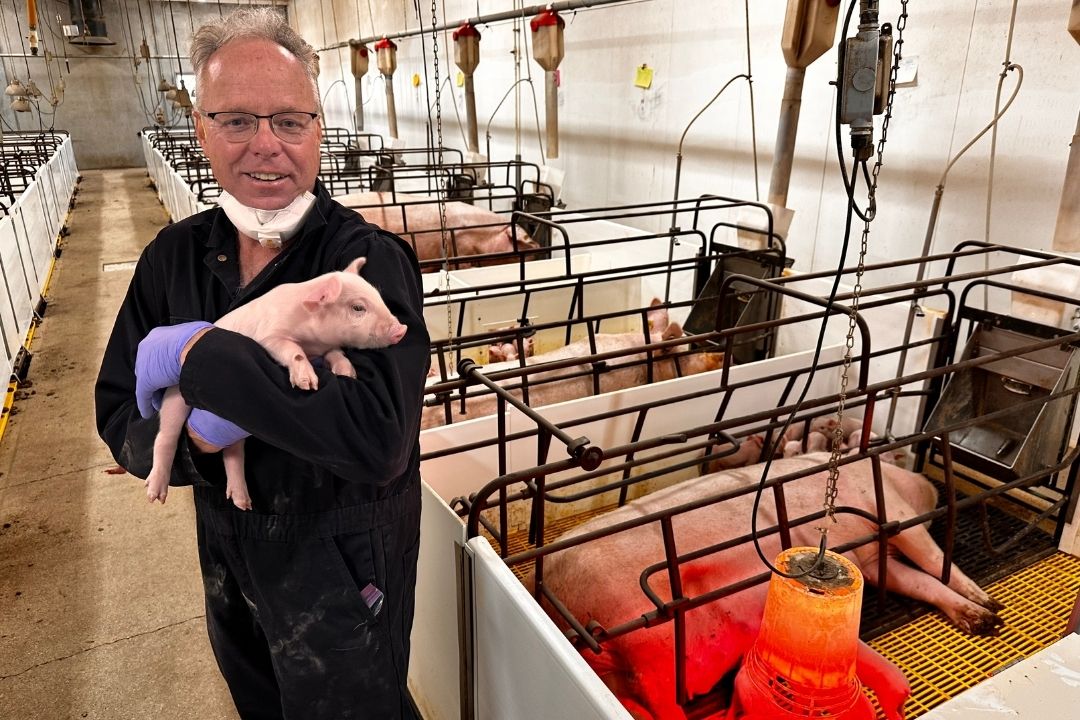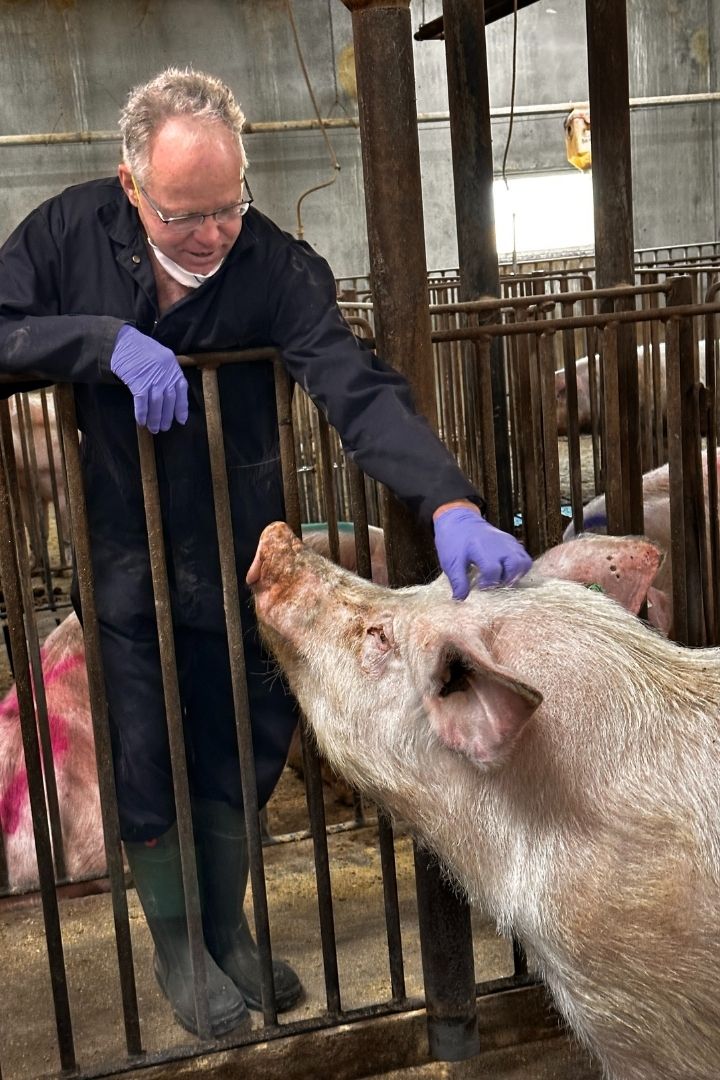
WCVM graduate has played integral role in Alberta’s swine industry for four decades
Things have changed a lot since Dr. Frank Marshall (DVM) graduated in 1983 from the Western College of Veterinary Medicine (WCVM) at the University of Saskatchewan.
When the young veterinarian first joined the Camrose Veterinary Group, the swine industry was booming in central Alberta and across the country. As Marshall recalls, it cost producers roughly $40 to raise a pig that they could sell for $200 in thriving swine markets.

When Marshall eventually set up his own swine-focused veterinary practice, he used to travel about 160,000 kilometres a year across the Prairies and into Montana to provide veterinary services to swine producers.
Four decades later, it’s much a different scenario. When Marshall drives down the highway, he sees empty swine barns that were once filled with animals. In the area near the communities of Barrhead and Neerlandia where 300 hog farmers used to raise animals, there are now only four swine producers left.
About 260 commercial hog producers and another 500 farms with smaller herds are currently operating in Alberta.
Marshall lists a combination of reasons for the decline in swine producers including cyclical markets, emerging diseases, aging producers and government programs.
“What is left of our clients are our top-notch producers,” said Marshall, who identifies the 700-sow Hartland Colony barn near Bashaw, Alta., as one of the best operations he has seen in his career.
Visit The Western Producer to read the original news story written by Mary MacArthur, freelance journalist.
